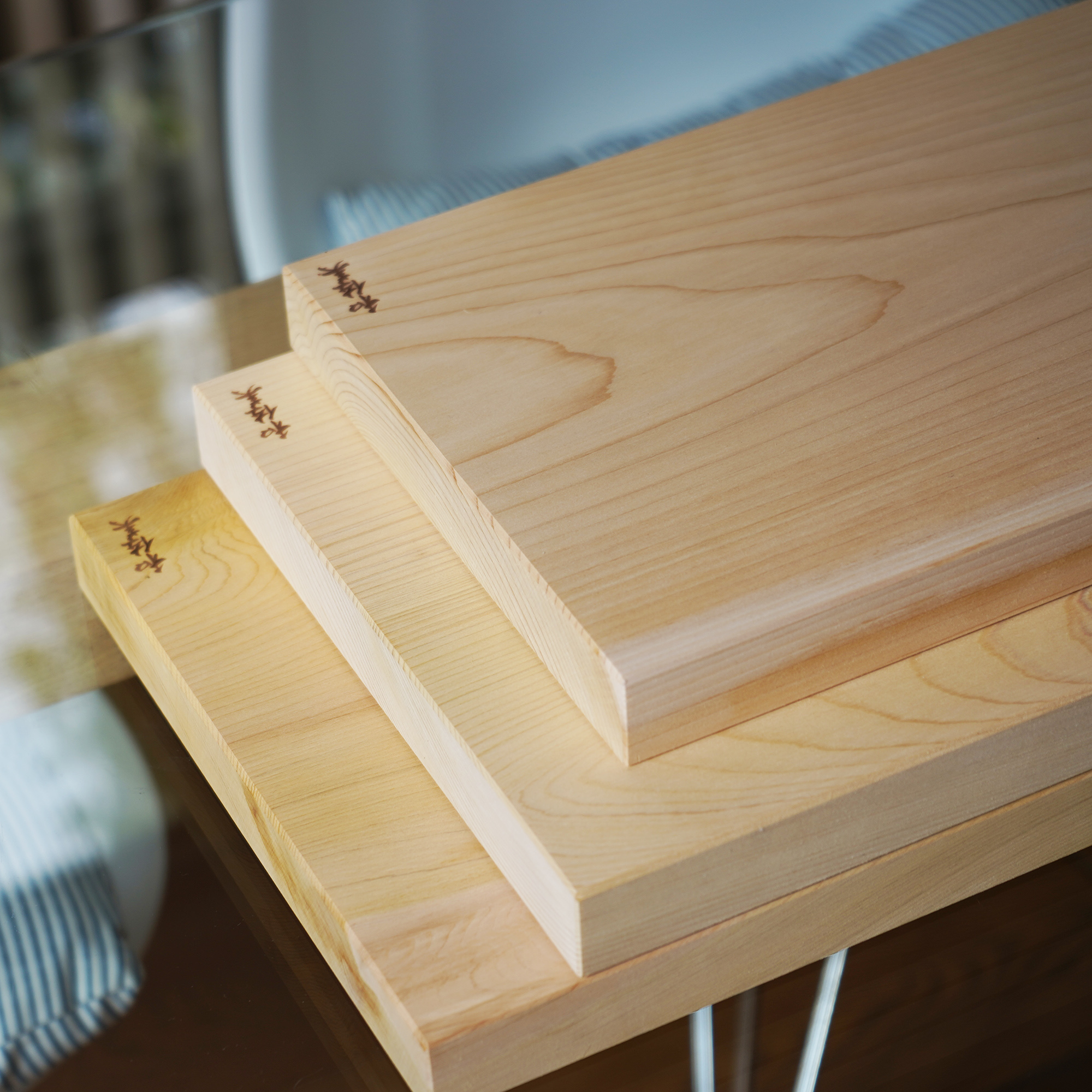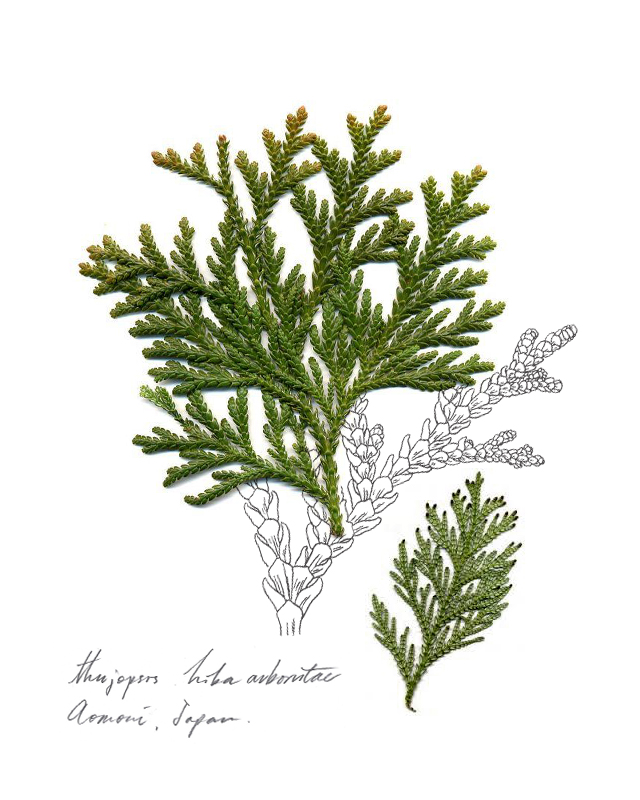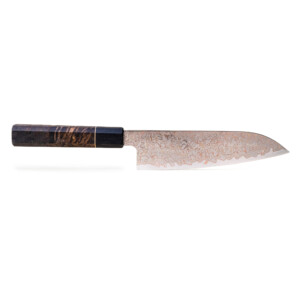In Japan, there is a saying that goes, “In a house made of hiba, mosquitos do not come for 3 years“. To celebrate our new Aomori Hiba cutting boards, we give you a look into the fascinating history and properties of the prized hiba tree.
Hiba arborvitae is a member of the cypress family Thujopsis dolabrata that is native to Japan. It grows mainly in the Aomori Prefecture. The tree is known as arborvitae or “tree of life” for its incredible lifespan and resilience against the elements. It grows slowly over a period of 250 years and can stand up to both strong winds and heavy snowfall.
Resilience to the elements
Aomori Hiba survives in harsh natural environments. A young tree sometimes keeps waiting for as many as 100 years, for big trees that cover its view of the sky to be cut. It even waits until other resources in the environment improve to start growing.
The tree takes as many as 300 years to grow to 70cm in diameter. Typical Japanese cedar takes 100 years to be the same size. You can see how slowly “Aomori Hiba” grows up compared to the other trees – it’s all in the grain. Aomori Hiba’s grain is very fine and is called “Golden Wood“.
The highest-quality oils are pressed from the bark of trees that have reached full maturity at 300 hundred years old. Due to this ageing process and its relative scarcity, hiba wood is considered a precious material, carefully regulated and protected.

Aomori Hiba among other trees
Hiba is one of the most popular tree kinds in Japan, alongside Hinoki and Sugi. Many pagodas and shrines are built using Hiba. It’s a fantastic building material because it naturally resists rot and mould, which is particularly valuable in humid summers.
Hinokitiol is a rare compound found only in Aomori-bred hiba trees. It banishes bugs like termites or spiders. In temples, where cleansing and purification are important parts of religious rituals, the natural antimicrobial and germicidal properties of hiba played an important symbolic part.
Hiba Trees are also prized for their woodsy, calming scent and are used as an excellent aromatherapy ingredient.
- Rated 5.00 out of 5$111
Why cutting boards made out of Aomori Hiba are the best?
Qualities that are valuable for shrines build to withstand 1000s of years of use aid our kitchen adventures. Natural mould and rotting resistance is a big one. Anti-microbial and germicidal properties of hinokitiol, a compound abundant in Hiba wood is also very important.
Learn more:
How To Choose The Best Cutting Board?
Differences Between End Grain Vs. Edge Grain x Cutting Board


































